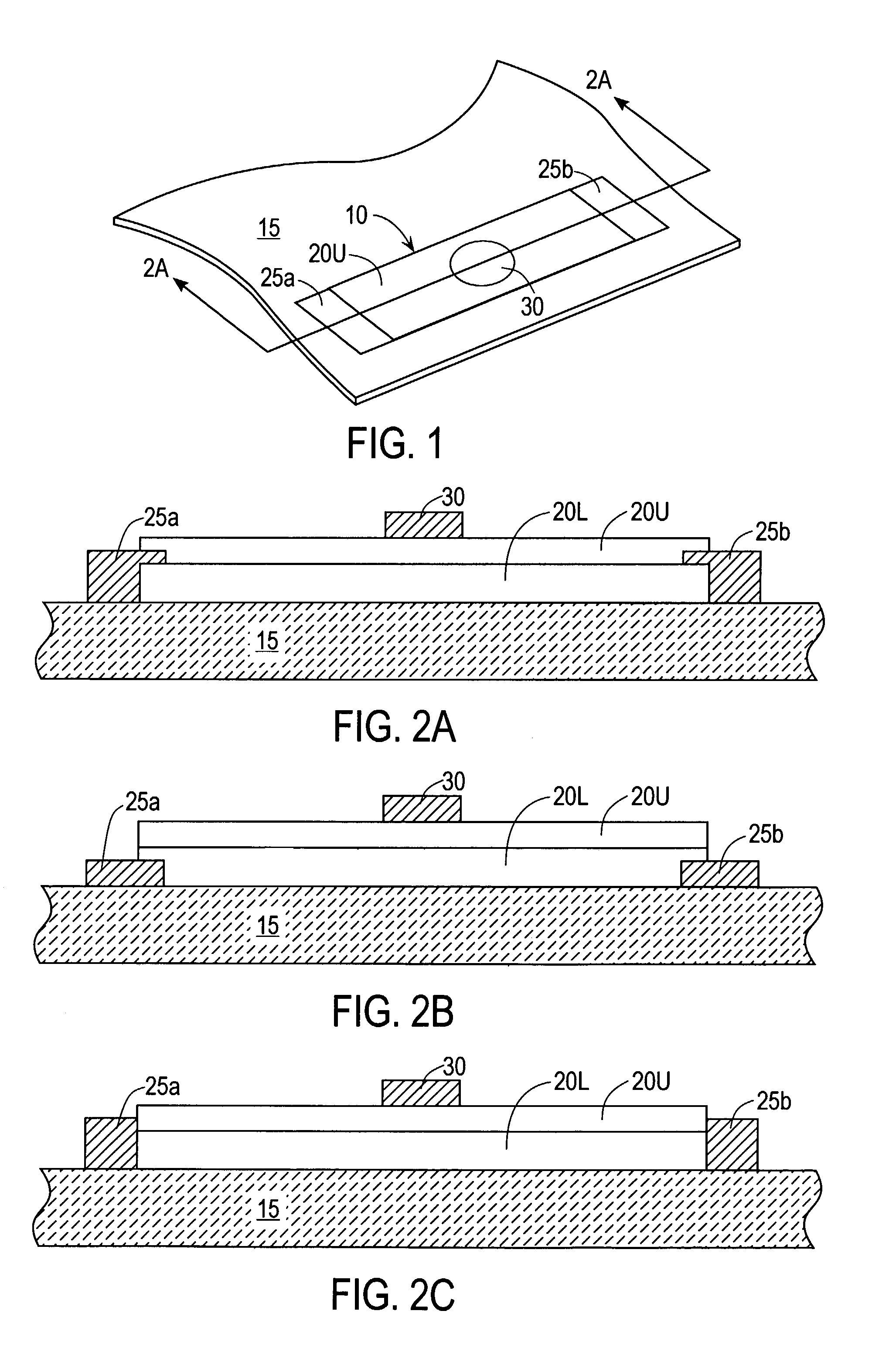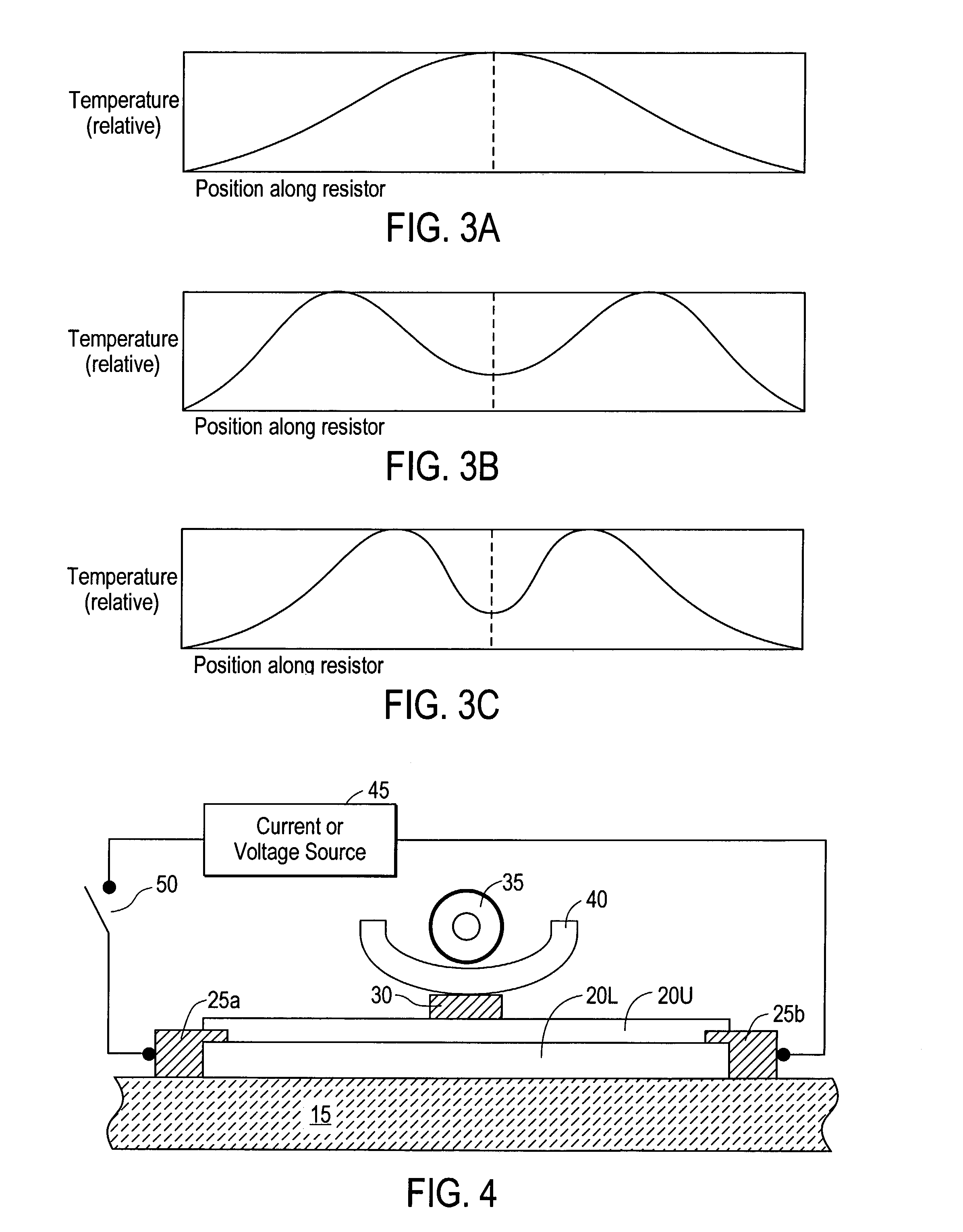Stacked electrical resistor pad for optical fiber attachment
a technology of electrical resistor pads and optical fibers, which is applied in the direction of resistor details, optical elements, instruments, etc., can solve the problems of difficult laser soldering, inefficient heat transfer of laser beams, and difficult laser soldering with 80au-20sn, and achieve low resistance and high resistance
- Summary
- Abstract
- Description
- Claims
- Application Information
AI Technical Summary
Benefits of technology
Problems solved by technology
Method used
Image
Examples
Embodiment Construction
Structure
[0015]FIG. 1 is a perspective view of a stacked electrical resistor structure 10 according to an embodiment of the present invention. FIG. 2A is a cross-sectional view of resistor structure 10 taken along line 2A—2A in FIG. 1. The figures are drawn with the resistor structure extending in a nominally horizontal plane, and for purposes of description, that orientation will be used, it being recognized that when the resistor structure is ultimately in a larger assembly, the assembly, and hence the resistor structure, may be in any orientation.
[0016]Resistor structure 10 overlies a non-conductive substrate 15, and has upper and lower electrically resistive layers 20U and 20L, which are sometimes referred to as the upper and lower resistors. Lower resistor 20L is closest to the substrate, and is not visible in FIG. 1 (being hidden under upper resistor 20U). The resistor structure further includes a pair of metal electrodes 25a and 25b at opposite ends, and a metal bond pad 30 o...
PUM
 Login to View More
Login to View More Abstract
Description
Claims
Application Information
 Login to View More
Login to View More - R&D
- Intellectual Property
- Life Sciences
- Materials
- Tech Scout
- Unparalleled Data Quality
- Higher Quality Content
- 60% Fewer Hallucinations
Browse by: Latest US Patents, China's latest patents, Technical Efficacy Thesaurus, Application Domain, Technology Topic, Popular Technical Reports.
© 2025 PatSnap. All rights reserved.Legal|Privacy policy|Modern Slavery Act Transparency Statement|Sitemap|About US| Contact US: help@patsnap.com



